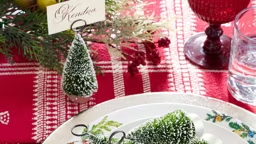 Photo: Tomahawk Log & Country Homes
Photo: Tomahawk Log & Country Homes
Over the past decade, the efficiency level of windows that building codes require for residential construction has substantially increased. This is important for buyers to understand because windows produced today have to meet government-backed Energy Star-rated standards, which can reduce energy consumption and increase potential long-term cost savings. This also creates an opportunity for more window-design creativity in modern log and timber homes.
The reason many dwellings of the past didn’t have a lot of windows incorporated into the design wasn’t that the residents didn’t want them — it’s because the windows, themselves, were so energy inefficient, larger or more frequent openings resulted in unwelcome heat transfer or air infiltration. By contrast, today’s high-performance, energy-efficient windows let you usher more natural light into a home without degrading its energy performance. This, combined with a desire to capture sweeping views of the surrounding countryside, has led log and timber homeowners to place a hefty amount of glazing, including walls comprised almost entirely of windows, into their homes.
Of course, like all building components, windows come in an array of price points. So while you’re establishing your budget, think of your windows — especially window walls — in terms of square footage comprised of wall space.
For example, let’s say a window opening is 6 by 6 feet. In this space, you have 36 square feet that would have been made up of stacked logs or structural insulated panels (SIPs), if you were building a timber home, which now will be comprised of glass. On a price-per-square-foot basis, chances are the cost of the window will be greater than the cost of the logs or SIPs it is replacing, especially if you opt for high-performance windows. But with proper design and window location, and, of course, the type of windows you choose, you should be able manage costs to the point where it’s virtually an even swap.
If controlling expenses is important to you, as it is to nearly all home buyers, I offer this money-saving tip: Vary your windows based on where each one will be located in the home. There’s no rule that says you have to use exactly the same grade or style of window throughout your house. You can mix it up to suit an individual room’s use and orientation.
Case in point: Multiple panes (double glazing is standard, but triple is better), low-E (emissivity) coatings and gas-filled cavities all offer superior insulation values; however, you may not need to use the same type of window on your home’s east-facing exposure as you do on the south. In the northern hemisphere, the southwest side of a house receives the greatest amount sunlight and solar energy each day, so it’s wise to invest in windows with a high rate of thermal performance in rooms that face this direction. They will cost more money, of course, but you can economize by scaling back to lower-grade windows for those that face north or east or are better protected from direct sun exposure. (Keep in mind that spending a little more on high-performance windows now can translate into long-term energy savings down the road.)
Operability also factors into cost. For instance, casement/awning windows typically cost about 10 percent more than other varieties, but in some spaces — like above a kitchen sink — they’re a smarter choice because they’re easier to open than a “hung” window would be in this spot.
Double-hung windows are the most frequently purchased option despite the fact that they can cost more than twice as much per window as their single-hung cousins. How many people actually open the top portion of a double-hung window? In my experience, not many (not even for cleaning); so why pay for something you don’t use? Fixed-glass windows are even less expensive than those that open, so in spaces where you know you’re not likely to throw up the sash, here’s a place where you can save a little cash.
Remember: As a home buyer, you — not the builder or the window manufacturer’s sales rep — are in control of your window package. Just like you design your home’s layout to fit your lifestyle, you can pick and choose your windows to best suit your needs.
Tip: See the Light
If your floor plan has an interior area devoid of windows (think: laundry, pantry, utility room), that doesn’t mean you can’t flood it with natural light. Look to solar tubes to illuminate the space. These systems enable you to channel, direct and reflect a significant amount of sunlight from a much smaller cavity than you’d need from a traditional skylight, often at a fraction of the cost.
Capturing Views vs. Collecting Energy
In the log and timber home industry, we talk a lot about the benefits of orienting a home on its lot in a way that will maximize passive solar gain. It’s an excellent practice – one that can save substantial sums of money if done properly. However, the reality is that for many who are building their dream home, capturing a gorgeous view is the primary objective, and often the best view and the optimum solar exposure don’t align. In this case, investing in high-quality windows not only will keep your family comfortable, it will shave money off heating costs.
Smart Shopping
According to the U.S. Department of Energy, 25 to 30 percent of a home’s heating and cooling energy use is due to heat gain/loss through windows. So how can you beat the odds? The DOE offers these smart window-selection guidelines:
-
Look for ENERGY STAR and NFRC labels.
-
In colder climates, consider selecting gas-filled windows with low-E coatings to reduce heat loss. In warmer climates, select windows with coatings that reduce heat gain.
-
In colder climates, choose a low U-factor for better thermal resistance. The U-factor is the rate at which a window conducts non-solar heat flow.
-
In warmer climates, look for a low solar heat gain coefficient (SHGC). SHGC is a measure of solar radiation admitted through a window.
-
In temperate climates with both hot and cold seasons, select windows with both low U-factors and low SHGCs to maximize energy savings.
-
Look for whole-unit U-factors and SHGCs, rather than center-of-glass U-factors and SHGCs. Whole-unit numbers more accurately reflect the energy performance of the entire product. Source: energy.gov/energysaver
Dan Mitchell is a builder and a Log & Timber Home University professor. He owns Eagle CDI, a construction firm based near Knoxville, Tennessee.











